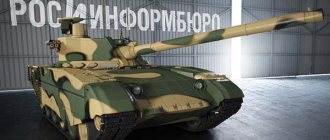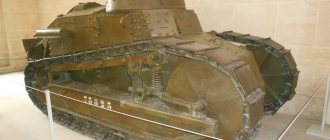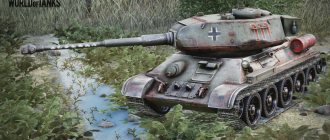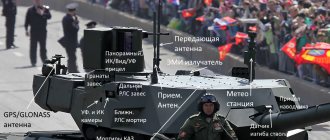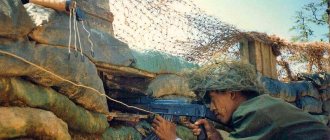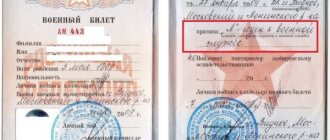Tanks! What an incredible and terrifying sight they were for the German soldiers when they first appeared on the battlefield of the Somme in 1916. Tanks were the result of many attempts to overcome the obstacles of new types of warfare - machine guns, barbed wire and craters of no man's land. The British Mark I was able to crush these barriers with its might and began a new era of mechanized warfare!
On the same topic
How tanks became a formidable weapon, or the most incredible battles of the First World War
Joakim: You know, Indy, today I want to talk about tanks!
Indy: About the future of military affairs!
Announcer: Born in a factory, created by engineers, invulnerable to the bullets of ordinary soldiers, capable of overcoming any obstacles - a tank. The future of military affairs.
Indy: In the fall of 1914, the Western Front of the Great War had stabilized. The race to the sea, in which both sides tried to outmaneuver each other, failed, and the vast armies of Europe, frightened by mounting losses, began to dig in.
It was clear to everyone that the old methods of war no longer worked. They were put to an end by the power of machine guns, shooting from fortified positions into the no man's land, blocked by barbed wire and pitted with craters.
Kirill Kopylov
A common misconception. In 1914 there were too few machine guns to have a decisive influence at the front. We fought for many months without seeing or hearing a single machine gun.
In reality, the main problem of the infantry, from which they had to escape by burying themselves in the ground, was rapid-fire artillery with shrapnel shells, capable of turning an infantry company into bloody scraps with a few good salvoes from one battery. And with luck, the battalion too. However, even the most primitive trench reduced the effect of artillery fire many times over.
Infantry and cavalry, which had served as the main instruments of war for centuries, were defeated by technology, and the warring parties were faced with a simple question - what to do?
In search of an answer, politicians, military experts, industrialists and scientists considered a variety of proposals for breaking the positional deadlock. From portable armored shields to carts with machine guns, right up to the craziest ideas like electric water cannons, solutions were sought everywhere.
Alexey Tarasov
Here, for the sake of clarity, everything is grouped together. But the main problem that the military wanted to solve was the destruction of the wire fences. Accordingly, at the very beginning, engineers did not offer combat, but rather specialized engineering vehicles, often on a civilian chassis.
When did the first tanks appear in Russia?
In the fall of 1919, the Council of Military Industry of the RSFSR decided to start producing its own tanks
similar to the French Renault FT-17.
tank
was taken as a sample , which was disassembled into parts at the Sormovo plant in Nizhny Novgorod and every detail was carefully measured.
Interesting materials:
How can you improve your vocabulary? How can you stretch natural leather? How can you stretch boots at the top? How can you stretch your stomach? How can you glue without glue? How can you preserve chicken without refrigeration? How can you hide a cheat sheet? How can you remove smoke from a pan? How can I remove the melody instead of the beep? How can I shorten blinds?
Battle of the Somme. Progress of the battle. Bottom line
Operation on the Somme River
The Battle of the Somme was a battle fought in the French theater of World War I by the British and French armies against Germany. Took place from July 1 to November 18, 1916 on both banks of the Somme River. One of the bloodiest battles in human history, in which more than 1,000,000 people were killed and wounded.
Planning the offensive
As part of the strategic plan of the Entente countries for 1916, it was planned to launch, in particular, an offensive of Anglo-French troops in the area of the Somme River in Northern France. If the Germans at Verdun used the tactics of breaking through with large forces on a narrow section of the front with preliminary powerful artillery preparation, the Allies intended to attack on a wide front. But heavy artillery fire was also provided here, after which the infantry would go on the offensive.
The offensive was to be carried out by three French and two English armies on a front 70 km wide. To support the operation, almost half of all the aviation and artillery available to the Allies on the Western Front had to be used. The main task was assigned to the French. The allied forces had to advance in diverging directions: the French to the east, and the British to the north.
But the Germans were able to prevent the Entente's advance with their attack on Verdun. There they pinned down a significant number of French. Therefore, the original operation plan was revised. Now the main task was entrusted to the British soldiers. The main blow was to be delivered by the 4th English expeditionary army of General Rawlinson. She was ordered to break through the enemy front in a sector of 25 km and conduct an offensive in the direction of Bapaume-Valenciennes. The French 6th Army under General Fayol broke through enemy defenses on both sides of the Somme River and contributed to the success of the British 4th Army from the east.
The allies believed that with the help of methodical sequential attacks on the enemy’s lines according to the pattern - first artillery shelling, then taking the position with infantry - after some time the troops would reach the operational space. A strict offensive schedule was developed for all units with stops at the “leveling lines” so that none of the divisions could get ahead.
Correlation of forces. Preparing the operation
At the beginning of the operation, the 4th British and 6th French armies had 32 infantry and 6 cavalry divisions, 2,189 guns, 1,160 mortars and 350 aircraft. The breakthrough area was set at 40 km.
READ on the website: Princess of Ukok. History of the find. Description
On the front that the British and French were about to break through, the 2nd German Army of von Bülow was located. The defense consisted of three main and one intermediate positions, equipped with reinforced concrete shelters and dugouts. The first position was covered by two strips of barbed wire. The total depth of defense reached 7–8 km. In total, at the beginning of the operation there were 8 German divisions, 672 guns, 300 mortars and 114 aircraft in the Allied offensive zone.
The Allies carried out their preparations, practically without hiding, for 5 months. In the offensive zone from the rear to the front, hundreds of kilometers of railways were laid, 6 airfields were equipped, 150 concrete platforms for artillery were built, and a water supply network was built. We practiced the interaction of the units and carried out psychological training.
Start of the battle
Artillery preparation began on June 24, 1916 and lasted 7 days. The French artillery alone spent 2.5 million shells during this period of time. The neutral zone turned into a smoking mass. On July 1, thousands of Allied soldiers poured through. The German positions were silent. It seemed that they were crushed by the 7-day artillery barrage. But the Germans got out of the dugouts and rolled out guns and machine guns. Soon they met the attackers with return fire.
Positional battle
The British army took the first position with only two corps of the right flank. The attack of the rest of its corps was repulsed with huge losses for the attackers. On July 2, the English commander-in-chief, General Haig, limited the front of attack to three corps. The French had more significant success south and north of the Somme.
On July 4–5, von Bülow's army received 5 more fresh divisions. The offensive slowed down. After 3 days, the composition of the 2nd German Army increased by another 11 divisions. The superiority of the Allies in forces was reduced by 2 times. The war of attrition began again. On July 19, the German 2nd Army was divided into two - the 1st, north of the Somme under the command of von Bülow, and the 2nd, on the south bank of the river under the command of Galwitz. Greater success was achieved by the Allies, largely thanks to the Somme, at Verdun, where the Germans were forced to give the initiative to the enemy and transfer troops to the Somme. Hindenburg replaced Falkenhayn and took the post of German commander-in-chief.
In September-October the operation on the Somme acquired even greater scope. On September 3, Allied forces launched a combined attack with 4 armies to capture the heights between the Somme and Ancre rivers. By that time, the Germans had increased their defense in depth and brought their grouping to 40 divisions. The army group was led by Crown Prince Rupprecht of Bavaria.
By September 12, the Allies were able to reach the third German position, and in the zone of the 6th French Army they broke through it. But the French forces were exhausted, and on September 13 the Germans closed the gap.
READ on the website: Capture of Jerusalem by the Crusaders (1099)
First tanks
The British carried out a tank attack on September 15th. At that time, British factories had just begun to build tanks. The British command had only 49 tanks at its disposal. They had rather low data: a cruising range of about 24 km, a maximum speed of 6 km per hour, and armament - machine guns. It was raining. 32 tanks gathered at the starting positions, the rest got stuck in the mud or stood still due to broken mechanisms.
The attack began on September 15 at 5.30 am. New tasks were set for the tanks. They were supposed to support the infantry and clear the way for them from enemy firing points. The morning fog hid them from the enemy's eyes. Before the Germans could come to their senses, unprecedented monsters fell on their trenches. Roaring engines, shrouded in fire and smoke, tearing barbed wire and collapsing dugouts, the tanks crawled forward. The Germans began to flee in panic.
The battle lasted until 10 o'clock in the morning. Despite the small number of tanks, their imperfections, the terrain riddled with craters and poor interaction with the infantry, the advance of the British in 5 hours of battle was 5 km along the front and 5 km in depth. Losses were 20 times less than usual. The commander asked London to urgently order another 1000 tanks. Of the 32 vehicles that launched the attack, only 18 were able to take direct part in the battle. They turned out to be not all-terrain. If separated from the infantry, low-speed tanks easily became prey to German artillery. However, the period of “tank horror” continued for some time.
As a result of the battles on October 25–27, 1916, Entente soldiers were able to capture the heights that dominated the area between the Somme and Ancre, but were unable to completely break through the German defenses. On November 18, due to depletion of resources and bad weather (the area turned into a complete swamp), the fighting stopped.
Results
Thus, the operation on the Somme lasted 4.5 months. The defending side increased the strength of resistance and the depth of defense faster than the advancing troops could overcome it. The Allies only pushed back the German defenses on a front of 35 km and a depth of 10 km. The French lost 341,000, the British - 453,000, the Germans - 538,000 killed, wounded and captured.
But the results of the 1916 campaign were generally more favorable for the Entente countries. The German army lost the strategic initiative it had enjoyed since the beginning of the war and went on the defensive. The superiority of the military-economic potential of the Entente became increasingly clear.
V. Karnatsevich
ed. storm777.ru
The first wave is coming
Of the promised 150 tanks of the “male” (with six-pound guns) and “female” (with machine guns) modifications, only 48 reached the front.
Alexey Tarasov
This is where Indy gets a little confused. Firstly, the initial order was for 100 vehicles and was increased to 150 in April 1916. Not the best idea if you need to have time to prepare a new type of weapon for the front.
Here we must remember that tank troops in 1915–1916 were such an unplowed field, where many things were done intuitively and tested in practice.
Secondly, 60 vehicles reached the front.
Many broke during transportation, and there were not enough tools and spare parts.
Alexey Tarasov
Nothing was broken during transportation. Shortages did occur, but due to lack of experience or due to lack of time, and not due to the fault of supplies. In particular, the orders were issued on September 13, but the very next day after the tanks began moving to the starting points of the attack, orders arrived with changes.
One map and set of orders were issued to six tank commanders (one rifle for three, yeah).
The tanks had to undergo baptism by fire on September 15, leading the attack on Morval-Bapaume near Fleur-Courcelette.
Kirill Kopylov
Hm. Interesting. In no source and even in British documents do these two settlements appear as the final goal of the offensive of that day; the tasks were much more modest.
The tanks were supposed to operate in groups of three with close infantry support.
Kirill Kopylov
The question “who supports whom and how does the tank-infantry pair interact with whom?” was in a stage of stormy uncertainty and full-scale testing. In relation to that day, we can say that tanks and infantry moved along the same fields and this is where their support for each other often ended.
Alexey Tarasov
Here is what historian David Fletcher writes about the first use of tanks: a company of four squads, each with six tanks: three “males” and three “females,” plus one spare per company.
In total, there were 60 tanks in France, 25 (24+1) each were issued to two companies C and D, ten more vehicles were left in reserve.
ORBAT confirm this number.
Each crew member received a leather helmet, goggles, a gas mask and a revolver. The already cramped fighting compartments of the tanks were filled with flasks of lubricant and ammunition boxes for machine guns.
The conditions inside were unbearable. I can confirm this personally. At the Bovington Tank Museum, the director and I climbed into a Mark IV tank. There were only two of us, it was clean inside and we weren't crawling across the battlefield in a cloud of exhaust fumes, but I was still very glad to get out.
Alexey Tarasov
Firstly, by the standards of our time, it was hot, cramped or uncomfortable in any civilian or military equipment of that time. A 3rd class passenger carriage immediately behind a locomotive tender or the London Underground with steam locomotives were also not the height of convenience. All life at the beginning of the twentieth century was not comfortable by our standards.
Secondly, the tanks' shortcomings were known to the developers even before they went into battle. These were tolerable inconveniences, they were known about them, and they worked hard to eliminate them.
Approaching the German trenches, the tanks attracted the attention of all the machine gunners, and bullets hammered the armor. The roar of engines, the clanging of gearboxes and the shots of six-pound cannons deafened the tankers. The inside smelled of fuel, powder gases and exhaust; it was almost impossible to breathe. The gunners were sweating from the proximity of the hot engine, sliding on spent cartridges and trying to aim through tiny viewing slits.
Alexey Tarasov
The sights were quite modern. Do not confuse viewing slits and sighting devices.
Armor did not always save - many tankers were wounded by lead splashes of bullets crashing against the hull. Small fragments flew through the viewing slots and blinded the crew.
Alexey Tarasov
An alternative to the “cramped, hot tank” was to walk in the refreshing breeze directly into enemy machine guns, carry the load on your back and other types of “manual work”.
Therefore, people from other branches of the military were quite willing to become tank crews, even coming from other countries. Already in the first intake of HS MGC there were not only British, but also Scots, Welsh, several people came from India, the USA, and one future tanker arrived all the way from Sri Lanka, where he worked as a tea planter.
The renowned Harold "Morty" Mortimore, the first tank commander to fly a D1 Daredevil tank into battle, became a tank crewman from the Royal Naval Air Service.
The fact is that during the flights Morty suffered from severe seasickness, plus the unreliable balsa structures made him nervous. Therefore, when the pilots were approached with an offer to participate in a “secret and dangerous mission,” Harold immediately volunteered, while quipping: “Nothing could be more terrible than this” - that is, aviation.
Morty fared much better with tanks, and he even named his daughter Tilly (Matilda) - after the tank, of course.
“When you are sitting in a tank, because of the noise, it is difficult to understand whether they are hitting the car and what is happening at all. The roar of the engine was simply deafening, we had to keep fire extinguishers ready at all times in case it overheated, because there were twenty gallons of fuel on each side and ammunition storage in every possible place. A fire in a tank wouldn't do any good. The Fritz fired at us, the shock wave of the explosions was felt through the viewing slits. All that was visible was the infantry around. I kept the machine gun triggered, trying to suppress the enemy shooters working on our guys,” J.L. Eddy, Tank Corps Private.
As a result, out of 42 combat-ready tanks, 32 crawled to their original positions. Of these, 18 reached the enemy. But only nine lasted long enough to influence the course of the battle.
Alexey Tarasov
Here's what Fletcher writes: 49 planned, 32 went into battle, of these five got stuck, nine broke, another nine moved slowly and caught up later, and nine successfully reached their targets. This is clearly not “32 crawled to their original positions.”
Another historian, Pope, writes about 48 deployed vehicles. It seems that in D Company one of the tanks was almost immediately replaced by a spare. Hence the difference is 48/49 cars.
The tanks had several sequential tasks; they had to move from one to another. Several vehicles completed all tasks and returned home only because they had used up all the ammunition and were running low on fuel.
In general, it is worth remembering that the tanks that broke down, fell behind or got stuck on September 15th successfully took part in the battle in the following days.
The rest fell victims to mechanical problems, were destroyed by German artillery, or became stuck in craters and trenches. The application, however, was considered successful. The tanks inflicted huge casualties on the frightened German soldiers and proved effective in suppressing machine gun nests.
Many Germans died fleeing from machines that seemed unstoppable to them.
Alexey Tarasov
The effect of the first use of tanks was so significant that such a phenomenon as “tank fear” or “tank horror” appeared. The Germans use three words to describe this effect - Tankschrecken, Ungeheuer and Ungetüm.
This is what Len Lowell, a private in the 6th Battalion of the King's Own Yorkshire Light Infantry (KOYLI), whose two companies accompanied the first tank attack, remembers:
“The Germans were horrified when the tank appeared. They just stood there until they realized they had to get out of the way or they'd get crushed. Some of the Germans got away, and some of the Germans who didn’t want to or couldn’t, well, the tank just drove over them and crushed them.”
True, the Germans’ fear soon passed, and by the end of the war they became the best anti-tank fighters of the First World War, and their experience began to be used in the following wars.
Kirill Kopylov
On the other hand, there were many who did not run, and the German artillerymen immediately came up with the first principle of anti-tank gunnery - “let them get closer and don’t drift.” And then the second one - “concentrate the fire of the maximum number of barrels on each vehicle.”
The first French tank - Renault FT
Such a car was the French Renault FT
, whose combat debut took place in May 1918. Why was it such a revolutionary car?
It set the standard for tank design - with the drive located at the rear of the vehicle, the fighting compartment at the front of the vehicle and a rotating turret equipped with a gun.
The Renault FT was without a doubt the best tank of the First World War,
played an important role during the military offensive of 1918, then it was nicknamed the “Victory Tank”.

